Call US
24/7
Free Confidential case Evaluation
(813)922-0228Call US
24/7
Free Confidential case Evaluation
(813)922-0228Loading...


Florida is beautiful, yet the weather has its own mind. A morning that starts sunny can suddenly become dangerous. A downpour, a gust of wind, and your RV might skid off course before you even notice. Most drivers believe they’re ready, but the truth is, even a small misstep behind the wheel of a big rig can change everything, for your safety and for the trouble the law may bring.
I’ve seen people “push through” storms, thinking they’re in control, only to end up with costly damages, denied insurance, and problems they never imagined. The real risk is how your choices will be judged when things go wrong. In Florida, the law doesn’t forgive carelessness, and weather is no excuse.
So, what should every RV driver really know before venturing into these unpredictable skies? And how easily can one moment of misjudgment become a legal trap that stays with you long after the rain stops?
Rainstorms in Florida are notorious for appearing out of the blue, and if you're not careful, driving an RV on wet roads is a surefire way to end badly. I’ve handled cases where drivers thought a light drizzle wasn’t a big deal, only to end up hydroplaning and causing accidents that could have been prevented.
Unlike a car, an RV’s size and weight make stopping quickly much harder. Tailgating, speeding, or ignoring worn tires is something a court or insurance company will notice. I’ve seen drivers get partial or full liability simply because they failed to adjust to the conditions.
One of the biggest mistakes I see is people thinking their experience behind the wheel is enough. Experience won’t save you if the road is slick and your RV is too heavy to maneuver safely. Slowing down, keeping extra distance, and checking tire tread before you hit the road are simple steps that can protect both your life and your legal standing.
Another common issue is underestimating visibility problems. Heavy rain can make it impossible for other drivers to see you, and if an accident occurs, courts often ask whether you took reasonable precautions to remain visible and in control.
Florida isn’t called the “Sunshine State” for nothing, but sunny days can quickly turn windy, especially during hurricane season. RVs are tall, heavy, and surprisingly vulnerable to gusts that can push you off course or even tip the vehicle. I’ve represented clients who underestimated a simple wind advisory, thinking it was just an inconvenience, and the results were flipped RVs, smashed trailers, and lives forever changed.
Even if the road is dry and visibility is perfect, a sudden gust can turn control into chaos. Courts look closely at whether a driver took reasonable precautions. Ignoring warnings or failing to slow down in high winds can make you partially or fully liable for an accident, no matter how careful you thought you were.
In my experience, the cases that worry me the most are the ones where drivers think weather only matters when it’s raining. Later, I’ll get into how flooding and road closures can raise the risk and liability and how skipping mechanical checks in Florida’s heat can turn a small problem into a big legal headache.
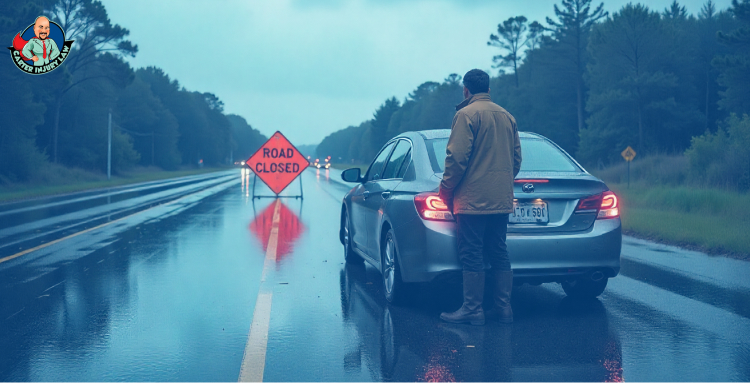
Florida’s low-lying areas and sudden storms mean flooding can appear in minutes, turning familiar streets into dangerous waterways. I’ve represented clients who assumed a road looked shallow enough to cross, only to have their RV stalled, swept by currents, or involved in a collision. In these cases, liability often falls squarely on the driver because ignoring official warnings or road closures is seen as negligent behavior.
Even if no other vehicles are involved, insurance companies can deny claims if it’s clear the driver disregarded posted signs or emergency alerts. I always tell my clients, “No RV is worth the risk of a flood, and no claim is worth the fight if you choose to ignore the law’s warnings.” The moment a driver tries to power through a closed road, courts and insurance companies alike will scrutinize their decision.
Another often-overlooked factor is water damage to the RV itself. Engines, electrical systems, and brakes can fail after even a short submersion, creating hazards that extend beyond the initial flood. From a legal standpoint, these mechanical failures can compound liability if they contribute to an accident or prevent safe evacuation.
Checking local advisories, having alternate routes mapped, and knowing high-risk areas are all steps that protect both your life and your legal standing. Now, let’s discuss another silent threat, Florida heat and its effect on RV mechanics.
Florida heat is relentless, and it does more than make you sweat, it puts serious stress on your RV. Overheated engines, tire blowouts, and failing cooling systems are common problems I see in accident cases, and they often catch drivers off guard. Many accidents aren’t caused by driver error alone but the result of preventable mechanical failures.
I’ve represented clients whose trips went sideways because they skipped routine checks, thinking a minor issue wouldn’t matter. Courts take maintenance seriously, especially when a mechanical failure contributes to an accident. Ignoring engine temperature warnings, worn tires, or fluid levels can make a driver legally responsible in ways most people don’t expect.
Another overlooked factor is sun exposure on long trips. Prolonged heat can degrade tires and other critical components faster than many anticipate. Simple preventive steps like checking tire pressure, inspecting belts, and keeping fluids topped off are your first line of legal defense.
Let’s summarize the legal lessons from all these weather-related risks and explain how your choices, preparation, and awareness can protect you if an accident happens.

After years of handling RV accident cases, I can tell you the law doesn’t forgive inexperience or inattention, even if the weather surprises you. Every case I see reinforces that your decisions before and during an incident are scrutinized closely. Courts and insurance companies don’t just look at what happened, they also ask, “Did the driver act reasonably given the conditions?”
One of the hardest lessons for many drivers is understanding that preparation matters as much as reaction. Did you check the forecast? Were your tires and brakes in good shape? Did you avoid risky roads? Skipping these steps can shift liability onto your shoulders, even if someone else was partially at fault.
I also advise that documentations like photos of road conditions, service records for your RV, and notes about weather warnings can all demonstrate that you acted responsibly, which matters when insurance companies or courts review your case.
Finally, it’s about mindset. Florida’s weather is unpredictable, and assuming you can “power through” is a recipe for disaster, both legally and physically.
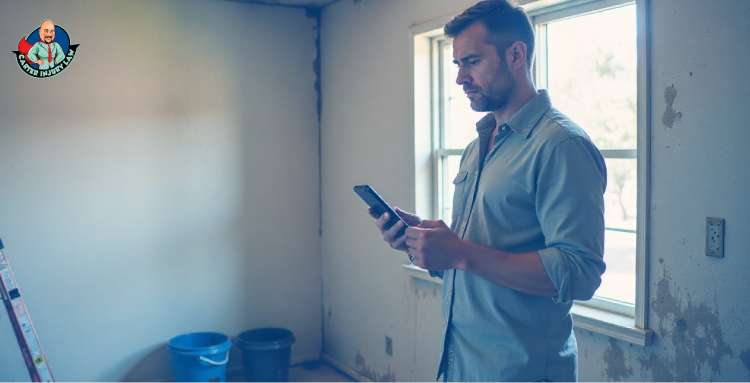
I’ve seen too many people brush off Florida’s weather, thinking, “It won’t happen to me,” only to call me after an accident has already turned their life upside down. Don’t wait for a crash to realize the risks.
If you drive an RV in Florida, it’s easy to feel like the weather is out to get you, and sometimes it is. I can help you make sense of the rules, look at your situation clearly, and guide you through the mess when accidents happen.
With my contingency fee service, you don’t pay unless we win. That means you can focus on getting back to your life without worrying about money standing in the way.
Reach out today, or send a message online, before the storms turn what should be a simple trip into something you’ll be regretting for a long time.
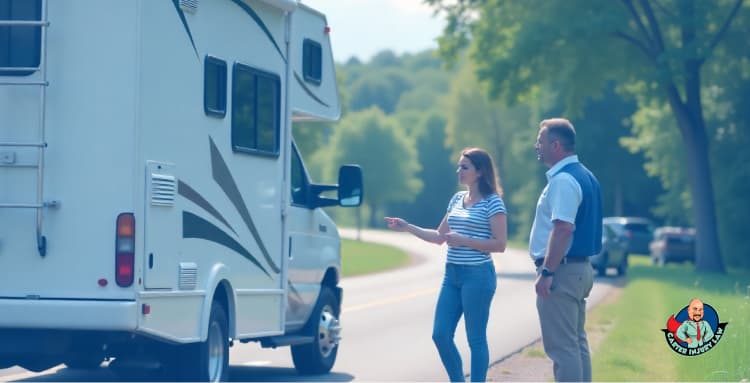
I’ve represented plenty of clients who thought renting an RV in Florida would be the start of a carefree adventure. They imagined sunsets on the Gulf Coast, campfires under the stars, maybe a long drive to the Keys. What they never pictured was the nightmare that can unfold when something goes wrong on the road.
I've seen families stuck out there after their rental car broke down, and they were miles away from any help. I’ve handled cases where an accident turned into a legal tug-of-war over who should pay. The contracts renters sign often hide more traps than protections, and when disaster strikes, the finger-pointing begins.
The question is simple enough on the surface, when an RV rental ends in disaster, who is actually responsible? The answer is anything but simple.
I’ve lost count of how many people have sat across from me, shaking their heads at the fine print they never bothered to read. Most renters see the RV keys and think freedom, not liability. The truth is, those contracts are written to protect the rental company first and you second.
I've come across some agreements that make renters accountable for damage, even if it was caused by a storm that hit the campground. I've seen situations where renters end up getting charged a ton of money for "interior damage" that they insist was already there when they moved in. Some contracts even shift the cost of mechanical failures onto the renter, no matter how unfair that seems.
The problem is, when things fall apart, those words in black and white come back like a hammer. That’s when I step in, to show the court or the insurance company that responsibility can’t just be pushed off on the renter.
And this is where the story gets even messier, because the biggest disputes usually begin with what happens on the road itself.
Accidents on the road are the turning point in most RV rental disputes. A careless lane change, a tire blowout, or a sudden brake failure can transform a vacation into months of medical bills and legal arguments.
In Florida, the driver is almost always the first person blamed. If you rented the RV, chances are the company will point straight at you, regardless of what actually caused the crash.
However, that doesn’t mean the renter is always at fault. If an accident traces back to poor maintenance, the rental company may carry the blame. I’ve fought cases where bald tires or faulty brakes were ignored, and it was only a matter of time before someone got hurt.
And then there are the situations no one expects. A manufacturer defect, a hidden flaw, a piece of equipment that was never safe in the first place. When those truths surface, liability shifts away from the driver and onto the company or manufacturer who cut corners.
Accidents are just the start, though. The disputes often deepen when the RV itself starts to fail in ways renters couldn’t have predicted. That’s where the real battles over negligence begin.
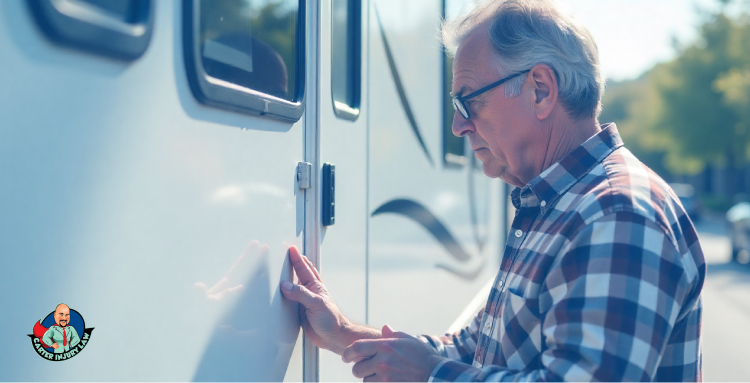
I’ve handled cases where the real danger wasn’t the driver, but the RV itself. Engines that overheated on the highway, air conditioning units that sparked fires, slide-outs that jammed and trapped families inside. These weren’t accidents caused by carelessness. They were the result of someone renting out a vehicle that should never have been on the road.
When a company knows about a problem and rents the RV anyway, that’s negligence. And negligence is the one thing they can’t escape, no matter how tightly their contracts are written.
The challenge for renters is proving what went wrong. Rental companies rarely hand over maintenance records without a fight, and by the time I get involved, the RV has often disappeared back into their fleet. That’s why documenting everything, from strange noises to leaking fluids, becomes the renter’s strongest defense.
However, the real surprises often happen once you’re inside the RV, where the comforts of home can turn into hidden hazards.
Insurance is where most renters get their harshest wake-up call. They sign up for coverage thinking every disaster will be handled, only to find out the policy was full of exceptions.
Most RV rental insurance doesn’t cover interior damage, lost personal property, or “acts of God” like hurricanes. Yet those are the very events that leave people paying out of pocket.
I've come across some policies where renters have to cover the first few thousand bucks before the insurance actually starts helping out. I’ve seen others that denied coverage outright because the renter didn’t report the incident within 24 hours. The fine print is written to protect insurance companies, not families.
That’s why I tell clients to never assume. Before the trip even begins, they need to know what’s covered, what isn’t, and what happens if disaster strikes in a way no one anticipated.
And when those surprises come to light, that’s where my role shifts from explaining the fine print to fighting back against the companies hiding behind it.

One of the biggest mistakes I see is people assuming they have all the time in the world to make a claim after an RV disaster. Florida law sets strict deadlines, and once they pass, your case can be gone before you even start.
For most personal injury claims, including those arising from RV accidents, you generally have 2 years from the date of the incident to file a lawsuit. This timeframe was reduced from four years in March 2023 under new legislation. It's crucial to act swiftly, as waiting too long can result in the court dismissing your case, regardless of its merits.
For cases involving breach of written contracts, such as disputes over rental agreements, the statute of limitations is five years. This means you have five years from the date of the breach to initiate legal action. I've had clients call me weeks too late, frustrated because the clock had already run out. That's why I always tell people to act quickly, document everything, and reach out for legal guidance immediately.

When renters reach out to me after an RV disaster, they often feel totally overwhelmed. They’ve been handed bills they don’t understand, blamed for damage they didn’t cause, or pressured into paying for repairs that were never their responsibility. That’s where my work begins.
The first step is cutting through the noise. I dig into contracts, maintenance records, and insurance policies to find the weak spots companies hope no one notices.
The second step is shifting the burden back where it belongs. If a rental company ignored safety, if an insurance company tried to dodge coverage, or if a manufacturer sold a defective RV, I make sure the responsibility lands in their lap, not on my client’s shoulders.
And here’s the part most people don’t expect, my clients never pay me upfront. We work on contingency, which means I only get paid when you win. That way, the fight for justice doesn’t come with another financial burden.
Your trip was meant to be all about making good memories, not dealing with legal stuff. Let me handle the legal battle so you can just focus on moving on.
Call Carter Injury Law today, and let’s make sure the responsibility lands where it should.

I see it all the time, passengers in golf carts, shaken, bruised, sometimes worse, unsure if they have any rights at all. Most assume that because they weren’t driving, there’s nothing they can do, that compensation belongs only to the person behind the wheel. However, Florida law tells a very different story.
Every occupant in that cart, whether seated in the front or clinging to the back, may have a claim. I’ve spent years helping people just like them, and I’ve seen cases where what looked like a simple ride turned into serious injuries and, in the right hands, serious recovery.
When I talk to clients after a golf cart accident, the first question I always hear is, “Am I even considered a passenger?” In Florida, a passenger is anyone riding in the golf cart who is not controlling it. That means your position in the vehicle doesn’t matter. You could be in the front seat, the back seat, or even on a side bench. As long as you were legally allowed to be there, the law recognizes your rights.
I’ve represented cases where multiple passengers in the same cart filed claims successfully. It’s crucial to understand that being a passenger does not mean being powerless. In Florida, if someone gets hurt due to negligence, flaws, or unsafe conditions in a vehicle, anyone who was in that vehicle might be able to claim compensation.
The circumstances of the accident can determine whether every passenger can claim damages. In some cases, only certain passengers recover, while in others, every occupant has a clear path to compensation. Understanding which situation applies can make the difference between getting what you deserve and walking away with nothing.
In my years handling golf cart injury cases, I’ve noticed there are certain scenarios where every single passenger in the vehicle is entitled to file a claim.
1. Driver Negligence
If the driver was distracted, speeding, or violating traffic laws, all passengers are affected by that negligence. I've seen clients who were just taking a quick trip, but they ended up with pretty bad injuries because the driver wasn't paying attention.. In these cases, every occupant can pursue compensation for their medical bills and pain.
2. Vehicle Defects
Sometimes the cart itself is the problem. Brakes that fail, steering that locks, or other mechanical defects can cause accidents that injure every passenger. I’ve represented multiple clients where the manufacturer was held responsible, and every occupant received damages.
3. Unsafe Property Conditions
Golf carts often operate in communities, resorts, or private property. Potholes, loose pavement, or poorly maintained paths can create dangerous conditions. In these cases, all passengers can ask for compensation from the property owner or the HOA, even if the driver wasn’t to blame.
4. Third-Party Liability
If another vehicle or person causes the accident, the law protects all passengers equally. I’ve seen cases where an external driver ran a stop sign, and every occupant of the golf cart recovered damages, not just the driver.
In the right circumstances, every occupant has a legal claim, and missing the signs early can leave you without the compensation you deserve.

When I sit down with clients after a golf cart accident, the first thing I do is explain what they can actually recover. Many passengers assume their injuries aren’t serious enough to claim anything, but the law sees things differently.
1. Medical Expenses
Every passenger injured in a golf cart accident can claim compensation for medical treatment. This includes hospital visits, surgeries, physical therapy, and ongoing care if necessary. I often remind my clients, "Even the small injuries need to be noted because they could turn into something bigger later on."
2. Lost Wages
If your injuries prevent you from working, you can recover lost wages. I’ve worked with clients who had injuries that made them unable to work for weeks or even months. Because of that, every passenger in the same vehicle got a fair amount of compensation for the money they missed out on.
3. Pain and Suffering
Physical pain and emotional distress are real, and the law recognizes that. Being thrown from a golf cart, facing uncertainty about recovery, or dealing with long-term discomfort all count. I always make it clear to passengers that this is a real part of their claim.
4. Property Damage
Sometimes personal belongings, like phones, bags, or golf equipment, get damaged during an accident. Passengers can claim reimbursement for these items, even if the accident wasn’t their fault.
5. Loss of Enjoyment of Life
If your injuries prevent you from enjoying everyday activities or hobbies, you may be entitled to compensation for the impact on your life. I’ve guided clients through claims where injuries meant giving up sports, travel, or other routines, and every passenger’s loss was considered.
As a passenger, your injuries matter just as much as the driver’s, and the law gives you a path to recover for each of these areas.

When it comes to golf cart accidents, time and documentation are everything. I always tell my clients, “The sooner you act, the stronger your case will be.” Florida law generally gives you 2 years from the date of the accident to file a personal injury claim, but waiting can mean losing evidence, memories, and even your right to compensation.
1. Seek Medical Attention Immediately
Even if your injuries feel minor, get checked by a healthcare professional. I’ve seen cases where passengers thought they were fine, only for symptoms to appear days later. Medical records are crucial evidence in proving your claim.
2. Report the Accident
Whether the accident happened on private property, in a community, or on the street, file a report with the relevant authority. This might be local law enforcement, property management, or an HOA. Having an official record strengthens your case.
3. Document Everything
Photos, witness statements, and detailed notes about the accident can make or break your claim. I always tell passengers to take pictures of the scene, any visible injuries, and even the golf cart itself. Keep all medical bills, receipts, and correspondence related to the accident.
Remember being a passenger does not mean you have to sit back and hope for the best. Taking the right steps early can secure the compensation you deserve for every injury, lost wage, and pain suffered.
I hear the same doubts from passengers all the time. “I wasn’t driving, so I can’t sue.” “My injuries aren’t serious enough to matter.” Both are myths that can cost you your rightful compensation.
The truth is, every passenger in a golf cart accident has legal rights, and Florida law protects you regardless of who was driving or where you were sitting. Even minor injuries or damaged personal property can be part of a valid claim.
I always tell clients, “Don’t let misconceptions stop you from pursuing what you deserve.” Every passenger who takes the right steps and works with an experienced attorney has a chance to recover.

When someone comes to me after a golf cart accident, my first priority is making sure they understand their rights as a passenger in Florida. I’ve spent years handling cases exactly like these, and I know how confusing it can be when multiple people are involved in the same accident. Every occupant can have a valid claim, and going through the process correctly is key to getting the compensation you deserve.
We handle passenger injury cases on a contingency fee basis. That means you don’t pay anything unless we win your case. My team and I take on the legal work, fight insurance companies, and make sure every passenger’s injuries and losses are fully accounted for. Our goal is to make sure you’re compensated for your treatment, loss of earnings, agony, and pain without the added burden of financial responsibility.
If you’ve been hurt as a passenger in a golf cart, don’t wait. Call me today, or fill out our online form, and I’ll personally review your case. Every passenger deserves a fair recovery, and I’m here to make that happen.

You wouldn’t think a little vehicle that barely makes it past 15 miles per hour could cause so much trouble, but Florida has some very specific rules, and ignoring them can turn a fun weekend ride into a legal nightmare. I’ve seen clients face fines, insurance denials, and even lawsuits just because their carts had a few extra bolts, bigger tires, or a speed upgrade.
Most people think, “It’s just a golf cart, how bad can it be?” That’s the mistake. And the moment your cart crosses the line from harmless to illegal, the consequences can be expensive, embarrassing, and even dangerous. I’ve been in courtrooms where a modified golf cart changed everything for someone, and the story always ends the same way…
What happens when a seemingly harmless tweak lands you on the wrong side of Florida law? That’s where things get serious.
From my experience, most people have no idea how quickly a harmless-looking modification can turn into a real legal headache. In Florida, a standard golf cart is meant for the course or certain private roads. Add a speed booster, oversized tires, or a fancy suspension, and suddenly your little ride can be classified as a low-speed vehicle, or LSV. That comes with a whole new set of rules, and ignoring them is a recipe for trouble.
I’ve had clients call me, thinking they were just “pimping out” their carts for fun, only to find themselves facing fines or insurance headaches because their cart didn’t meet safety standards. Florida law requires LSVs to have seat belts, headlights, turn signals, brake lights, mirrors, and DOT-approved tires. Skip any of that, and technically, you’re driving an unregistered vehicle. From a legal standpoint, that is a very big deal.
I remember one client who installed a high-powered motor to make his cart “street-ready.” He thought it was harmless and, honestly, a little fun. It was neither. A minor accident led to his insurance refusing to cover the claim because the cart wasn’t compliant. That tiny tweak turned into thousands of dollars in unexpected costs and plenty of stress.
Even if you never hit public roads, those modifications can make you liable if someone gets hurt. It is not just about tickets or fines; it is about real legal exposure. I’ve seen weekends ruined, bank accounts emptied, and reputations damaged, all over what seemed like a harmless upgrade.
Next, I will walk you through exactly what can happen if your cart is not compliant. The consequences are not always what people expect, and knowing them could save you from a lot of pain and money.

From my years handling injury cases, I can tell you, ignoring Florida’s golf cart rules is not just a small mistake. The moment your cart does not meet low-speed vehicle requirements, you are opening yourself up to real legal trouble.
I have seen first-time offenders hit with fines ranging from $25 to $100. That might not seem like much, but the bigger risk comes with repeat offenses or accidents. Some people face heavier fines, civil lawsuits, or even jail time. I once represented a client who thought a minor speed upgrade was harmless. Then he got into a collision, and the insurance company refused to cover the damages because his cart was not legally street-legal.
And do not assume DUI laws only apply to cars. If you are caught operating a modified golf cart under the influence, Florida law treats it very seriously. People are always surprised by that, but from my experience, it is a real risk.
Liability is another major concern. Even a small change that makes your cart unstable can trigger a personal injury lawsuit. I have seen cases where someone added a suspension kit for a “smoother ride,” and when the cart tipped over, the legal fallout was severe. The lesson I share with every client is that a fun upgrade can quickly turn into a financial and legal nightmare if it is not done by the book.
Next, I will walk you through how to make sure your golf cart modifications are legally safe. Knowing the rules can save you from situations like these, and it is easier than most people think.
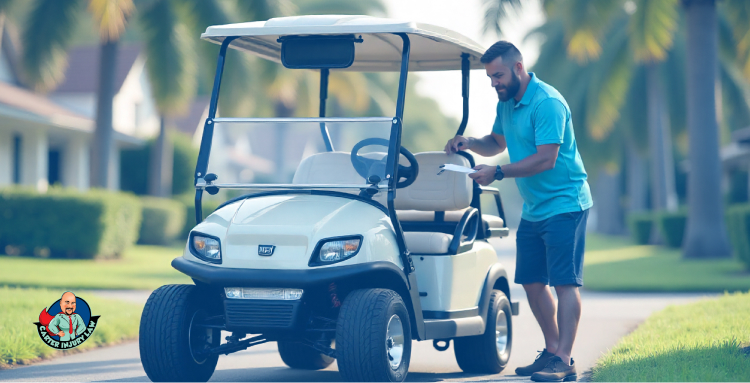
If you are serious about modifying your golf cart, the first thing I tell my clients is this: do not skip the legal steps. People often think that adding a few bells and whistles is enough, but Florida law is specific. To operate a modified cart safely and legally, it must meet the requirements for a low-speed vehicle.
Start by reviewing every change you have made. Seat belts, headlights, turn signals, brake lights, mirrors, and DOT-approved tires are not optional. Missing even one of these items can make your cart illegal. From my experience, the smallest oversight is often the one that ends up costing the most in fines or insurance disputes. Think of it as a checklist for safety and legality.
Keep detailed records of your modifications. Take photos from every angle and save receipts for all parts. Trust me, in a courtroom or during an insurance dispute, this paperwork can be your lifeline. I have had clients saved from major headaches simply because they had documented their upgrades properly.
Florida law requires Form HSMV 86064, the Affidavit for Golf Cart Modified to a Low-Speed Vehicle, and Form HSMV 82040, the Application for Title. Submit these carefully, and do not skip steps. Missing or incomplete paperwork can delay registration or even invalidate your insurance coverage. Filing the right forms is a protection for you and your passengers.
After submitting your forms, your local Motorist Services Regional Office will inspect your cart. Only when it passes inspection will you receive your title and registration. No shortcuts here. I have seen clients try to cut corners and it always ends up backfiring.
Laws change, and staying updated is your best defense. I have had clients come in thinking their carts were fully legal, only to learn that new rules had taken effect. Following the rules is about preventing accidents, insurance disputes, and unnecessary legal headaches.
From my experience, taking these steps is about protecting yourself, your passengers, and your wallet. A golf cart is a vehicle with real consequences if misused.
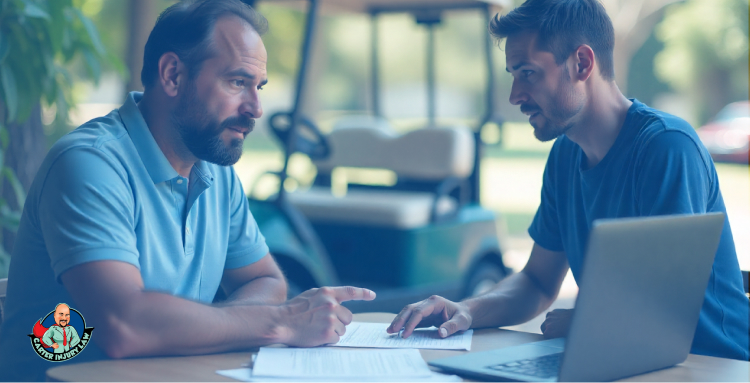
From my experience, most people have no idea how quickly a small golf cart modification can spiral into a serious legal problem. I have seen clients face fines, denied insurance claims, and even personal injury lawsuits, all because they skipped a step or assumed “it’s just a golf cart.”
The truth is, following the rules can save you from a lot of unnecessary stress, expense, and even danger. If you have already modified your cart or are thinking about it, do not wait for an accident or a dispute to make the decision for you.
My team and I guide people through these situations every day. We make sure you understand your rights, your risks, and how to protect yourself legally. The best part is that we work on a contingency fee basis. That means you do not pay us unless we get results for you.
A simple upgrade should be fun, not a legal headache. Give us a call today, and let’s make sure your ride stays safe, legal, and fully protected.
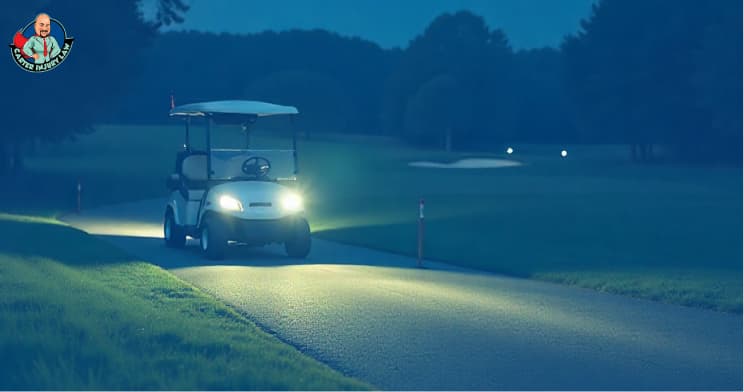
I have spent years representing Floridians injured in golf cart accidents, and I can tell you with certainty that most of the tragedies I see at night share a common thread…poor visibility. Golf carts were never designed for the dangers of darkened roads, yet they are increasingly used after sunset in neighborhoods, resorts, and retirement communities. What begins as a quiet evening ride can end with sirens, shattered glass, and lives changed forever.
The law is clear about what is required, headlights, brake lights, and reflectors are not optional luxuries; they are lifelines. However, time and again I find myself asking a sobering question in these cases, when the lights were missing or ignored, what chance did anyone truly have?
Florida law does not leave this matter to chance. Under Section 316.212 of our statutes, a golf cart may not lawfully travel on public roads after sunset unless it is equipped with the essentials, headlights, brake lights, turn signals, and reflectors. These are not bureaucratic trimmings, they are the bare minimum safeguards demanded of anyone who wishes to share the roadway at night.
When I am called to investigate a crash, one of the very first questions I must answer is deceptively simple, did the cart meet these requirements ? If the answer is no, the legal ground beneath the operator’s feet quickly gives way. Courts view such violations as negligence on their face, and juries seldom show sympathy to those who choose to roll into the dark without the basic tools of visibility.
And yet, it is not only about statutes and liability. It is about the silent margin between being seen and being struck, a margin as thin as the beam of a headlight.
In the courtroom, visibility is more than a matter of safety, it is a matter of blame. The law has a phrase for it, negligence per se, meaning that if you drive a golf cart at night without the equipment the statute demands, you are negligent by the very act itself. There is no debate to be had, the failure to comply has already written half the verdict.
Insurance companies know this as well as any lawyer. When I present a claim, adjusters will comb through the facts with a single question in mind, was the cart properly lit ? If the answer is no, their willingness to compensate an injured driver or passenger diminishes swiftly. In the eyes of insurers, a darkened cart is not a victim; it is a liability.
I have stood across from juries who listened carefully to such evidence. They may sympathize with a family’s loss, but when they hear that the cart was invisible on the roadway, their compassion hardens into doubt. To them, the absence of lights feels like the absence of responsibility.
Yet beyond legal doctrines and insurance tactics lies a harsher truth, when visibility is neglected, justice itself becomes clouded. And that is when the real tragedies begin to unfold.

In my practice, I have met families who never imagined that a short ride home from dinner could alter their lives forever. A golf cart struck by a car at night is rarely a minor incident. Unlike automobiles, carts offer no steel frame, no airbags, and no margin for error. When they are unseen until the final moment, the outcome is often severe, broken bones, head injuries, or worse.
I recall cases where drivers insisted they never saw the cart until impact, and the evidence supported their words. No headlights, no brake lights, no reflective tape, nothing to announce the cart’s presence in the dark. In those moments, fault and fate collide, and I am left to help families pick up the pieces of a tragedy that could have been avoided with something as simple as a functioning bulb.
These are not abstract dangers, they are nightly risks on Florida’s roads and community pathways. When visibility rules are ignored, the cost is measured not only in courtrooms and insurance claims, but in hospital beds and funerals. And the cruelest truth of all is this, nearly every one of these accidents was preventable.

The law sets the minimum, but wisdom counsels more. If you drive a golf cart at night, see to it that your headlights, brake lights, and reflectors are not only present, but in working order. A light that flickers or a reflector dulled by age may prove useless when seconds matter most.
I advise my clients, and indeed my friends, to think of visibility as a shield. Keep your equipment in good repair, add reflective markings if the manufacturer has given you little, and never assume that a driver approaching from behind will see you without help. Slow your speed after dark, and give others on the roadway the gift of time to notice you.
In the end, these measures cost little compared to the devastation I have seen when they are ignored. A few minutes of care before you set out may well spare you, and those you love, from the kind of accident that fills my files with sorrow.
As a lawyer, I am often called upon after the damage is done, when the questions are no longer about prevention but about fault and recovery. Yet each time I study the fragments of a golf cart accident, I am reminded of how easily so many of them could have been avoided. Lights, reflectors, and caution are simple things, yet they stand between a quiet evening and a lifelong tragedy.
If there is one truth I wish every Floridian would take to heart, it is this, the rules of visibility are not burdens to be borne; they are protections to be embraced. They safeguard not only your legal standing but also your very life.
I fight for those who have suffered when these safeguards were absent. However, I would far rather see fewer clients in my office and more carts on our roads lit brightly, seen clearly, and guided home safely. For in the end, the greatest victory is not won in court but on the road before the crash ever occurs.

If the unavoidable happens and you or your loved one are involved in a golf cart accident, know that there is still hope. My role is to guide you through the confusion, to stand in your corner, and to pursue the justice and compensation you deserve. We work on a contingency fee basis, which means you pay nothing unless we recover for you.
Time, in the wake of an accident, is both ally and adversary. In Florida, the law allows two years from the date of a golf cart accident to file a personal injury lawsuit. Two years may seem ample, yet in my experience, it passes more quickly than most anticipate, and waiting too long can close the door on justice entirely.
I counsel those who come to me that instant action is essential. Every day that slips by risks the loss of evidence, fading witness memories, and diminished clarity of the facts. Photographs of the scene, statements from those who saw what occurred, and thorough medical records are all best preserved when attention is immediate, not delayed.
Your case is your life, your health, and your future. Allow me to carry the burden of the legal fight so you can focus on healing and rebuilding.
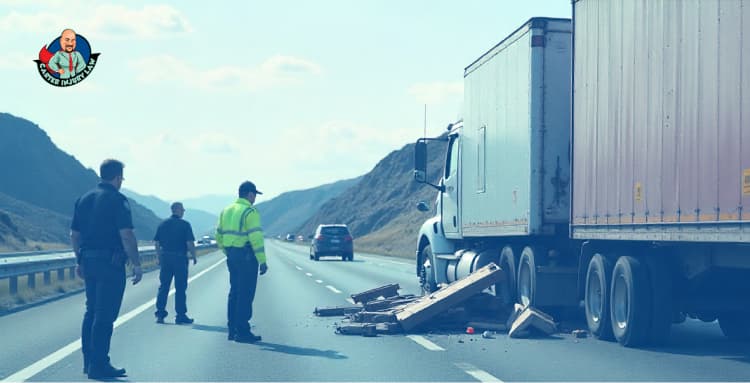
Highways in Florida see thousands of trucks every day, and most of the time their cargo makes it to its destination without trouble. However, when freight is not properly secured, the consequences can be catastrophic. A sudden cargo shift can knock a rig off balance, spread debris across lanes, or send heavy loads crashing into other vehicles. These accidents often leave drivers and passengers with serious injuries, costly repairs, and more questions than answers. Chief among them is who is actually liable when freight causes a crash in Florida?
The answer depends on how the cargo was loaded, secured, and inspected; responsibility may fall on the driver, the trucking company, the shipper, or even the manufacturer of the equipment used to hold the load in place. Florida law is clear that loads must be secured, yet real-world accidents often involve layers of responsibility that require close investigation.
So, let’s break down the rules, the potential parties at fault, and the legal options available if unsecured freight turns a routine trip into a life-altering event.
A cargo shift happens when freight inside or on top of a vehicle moves suddenly while in transit. The load may slide, roll, topple, or spill onto the road. Even a few inches of movement inside a trailer can destabilize a heavy truck and cause the driver to lose control. On flatbeds, improperly strapped machinery or building materials can slide off and strike nearby cars. In other cases, loose gravel, sand, or waste can scatter across the highway, forcing drivers to swerve and creating chain-reaction collisions.
The causes are often simple but serious. Freight may be stacked unevenly, secured with worn straps, or braced with the wrong materials. Sometimes the load is too heavy for the restraints chosen, and sometimes it is not checked after the first miles of a trip when vibrations loosen the bindings. Each of these errors can turn a routine haul into a hazard for everyone sharing the road.
These crashes are not rare. Florida’s busy freight corridors, from I-95 to I-75, have seen multiple accidents traced back to unsecured or poorly balanced cargo. The state recognizes the danger, which is why it has written strict rules into law about how loads must be secured. Understanding those rules is the first step in figuring out who may be at fault when cargo causes a crash, and that is where we turn next.
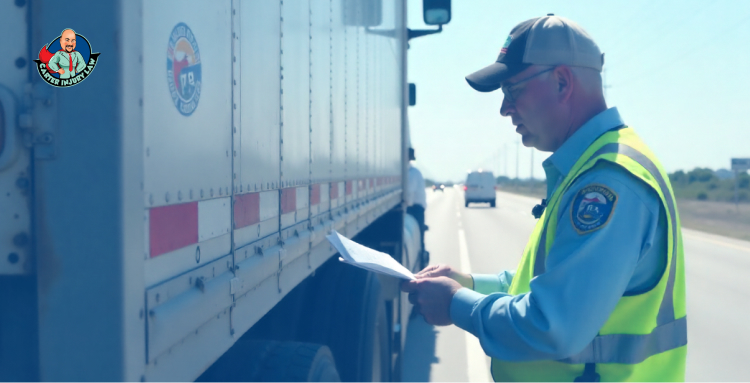
The core rule is found in Florida Statute § 316.520, which makes it illegal to drive a vehicle unless the load is secured in a way that prevents it from falling, shifting, or leaking. Both the driver and the owner of the vehicle are held separately responsible. That means blame is not limited to the person behind the wheel.
Some key points from the statute:
No leaks or spills: loads must be contained so nothing escapes onto the roadway.
Covers for loose material: trucks carrying sand, gravel, trash, or similar materials must use tarps or other coverings.
Compliance with federal rules: Florida incorporates the federal cargo securement standards issued by the Federal Motor Carrier Safety Administration, which set the minimum strength and number of tie-downs required.
Penalties: A violation can bring a traffic citation. If it is done willfully and leads to serious injury or death, it can be charged as a criminal misdemeanor.
For commercial vehicles, the FMCSA rules go even further. They require drivers to inspect cargo before starting a trip, re-check it within the first 50 miles, and continue to inspect it at set intervals. These rules recognize that securement is not a one-time task but an ongoing duty.
When a crash happens, investigators look closely at whether these state and federal standards were ignored. If they were, that opens the door to liability. However, the bigger question is whose shoulders that liability falls on. Was it the driver who skipped an inspection, the company that cut corners on equipment, or the shipper who stacked the load poorly?
When cargo shifts and triggers an accident in Florida, responsibility rarely falls on a single party. Liability is shared across the chain of people and companies who touched the freight. To understand how fault is assigned, it helps to break down the key players.
The Driver
Truck drivers have a legal duty to inspect and secure their loads. They must check before departure, reinspect shortly after starting the trip, and keep an eye on the cargo at scheduled stops. If a driver ignores these responsibilities or drives recklessly with an unstable load, they may be held personally liable.
The Trucking Company
Carriers are responsible for more than just keeping trucks on the road. They must supply proper securement equipment, enforce safety policies, and train drivers on cargo rules. If a company pressures drivers to rush or skips maintenance on straps and anchor points, it can be found negligent. Florida law also allows companies to be held vicariously liable for their drivers’ mistakes while on duty.
The Shipper or Loader
Often, freight is loaded at warehouses or docks by third parties. If cargo is stacked unevenly, overpacked, or left unsecured before a driver even starts the trip, the shipper or loader may share liability. Courts look at whether the shipper created a hidden danger that the driver could not reasonably detect.
Manufacturers of Equipment
In some cases, the securement devices themselves are at fault. A defective strap, chain, or anchor system that fails under normal use can shift liability to the manufacturer. While less common, product liability claims can arise when equipment fails to meet safety standards.
Shared Responsibility
Many cargo shift accidents involve multiple failures. A shipper may load incorrectly, a driver may skip an inspection, and a company may fail to enforce proper training. Florida’s comparative negligence system allows fault to be divided, which means several parties may pay a share of damages.
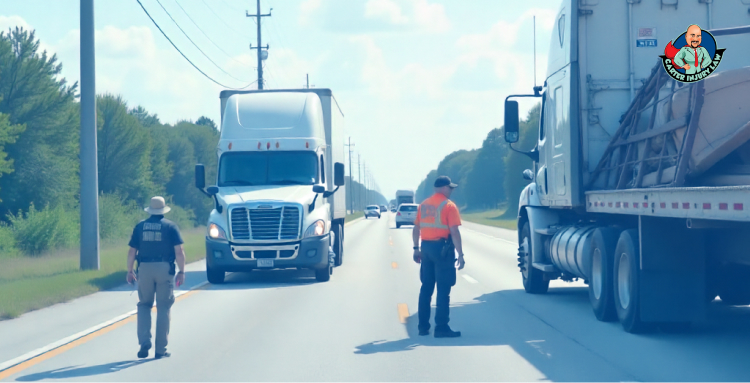
Your first priority is safety. Move to a secure location if possible, turn on hazard lights, and check yourself and passengers for injuries. If anyone is seriously hurt, call 911 immediately. Avoid moving injured individuals unless there is an immediate danger, such as fire or oncoming traffic.
It is critical to gather accurate information at the scene. Such as,
Photographs and videos: take clear pictures of the accident, the cargo involved, any damage to vehicles, skid marks, and road conditions.
Witness information: collect names and contact information from anyone who saw the crash.
Police report: request a copy or the report number from responding officers, as it often contains official observations about cargo securement.
Report the accident to your insurance company as soon as possible. Provide factual information without speculation. Even if injuries seem minor, a medical evaluation is essential. Some cargo-related injuries, like whiplash or internal trauma, may not show immediate symptoms but can impact claims and recovery later.

In my experience, they almost always involve multiple parties like drivers, trucking companies, shippers, and sometimes even the manufacturers of the equipment used to secure the load.
Expert Legal Process for Proving Negligence
From a legal standpoint, proving negligence in a cargo shift case demands a thorough investigation. We examine how the cargo was secured, review pre-trip and in-transit inspection logs, consult with accident reconstruction experts, and collect witness statements and photographic evidence. A case built on solid documentation and facts is always stronger in court or settlement negotiations.
Recovering Compensation from Truck Accidents
Over the years, I have helped numerous victims of truck accidents caused by unsecured freight recover compensation for medical bills, lost wages, property damage, and pain and suffering. Each case is unique, and the strategy must be tailored to the specific circumstances and parties involved.
Contingency Fees and Free Case Evaluation for Accident Victims
I also understand the financial hardship that follows a serious accident. That is why we operate on a contingency fee basis. You pay nothing unless we recover compensation for you. We provide a free case evaluation to review your situation, explain your options, and outline the steps ahead without any obligation.
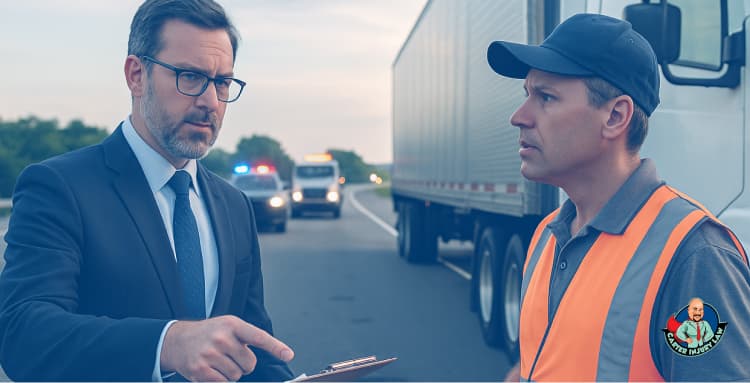
Trucking accidents are rarely simple misfortunes. They are complex events that place drivers, companies, and even entire communities under extreme pressure. In my years at Carter Injury Law, I have seen how the moments immediately following a crash can decide whether a firm protects itself with dignity or stumbles into costly mistakes.
The law demands much from trucking companies; however, fairness also demands clarity. Drivers must act swiftly, managers must respond with order, and firms must understand that every decision made in those first hours carries consequences. Evidence can fade, regulations can be overlooked, and the difference between compliance and negligence can rest on the smallest of details.
It is in these moments that the question arises, not simply what must be done, but why it matters so profoundly…
When an accident occurs, the very first duty is simple yet vital, safeguard human life. Drivers must ensure their own safety, check on others involved, and summon emergency assistance without delay. A truck can be replaced, cargo can be recovered, but a life cannot be restored once lost.
Once the scene is secured, attention must turn to preventing further harm. Hazard lights, warning triangles, or flares must be deployed, and if the vehicle can be moved without creating additional danger, it should be guided to a safe position. These are not only acts of responsibility but also the foundations of sound legal defense.
In these early minutes, drivers also have the opportunity to begin preserving the truth. Photographs of the roadway, positions of vehicles, weather conditions, and visible damage will later prove invaluable. A calm word exchanged with a witness, a brief note written down, or a photograph taken may mean the difference between clarity and costly dispute.
Yet safety and documentation are not the only matters pressing upon a trucking firm. Beyond the flashing lights and scattered debris, there lies the weight of law. The driver, the company, and the industry itself are bound by strict reporting requirements, and it is here that the line between compliance and liability begins to sharpen…
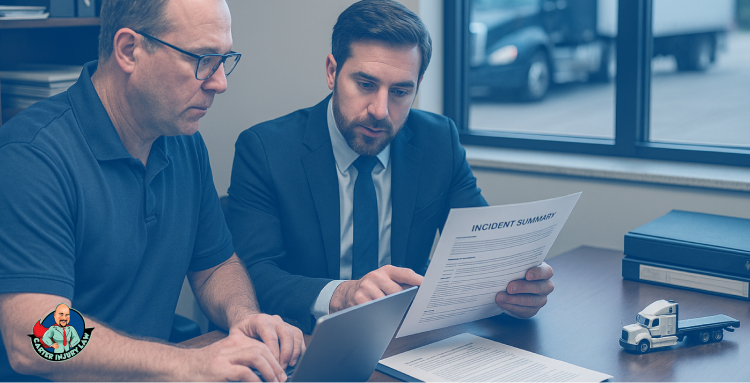
The law grants no leniency when it comes to reporting an accident. A trucking firm must notify the proper authorities without delay, beginning with local law enforcement. Their presence ensures the scene is managed with order, and their reports form the earliest official record of what transpired.
Beyond the local police, federal obligations cannot be ignored. The Department of Transportation and the Federal Motor Carrier Safety Administration both set clear thresholds for reporting. If an accident results in a fatality, an injury requiring medical treatment, or damage severe enough to disable a vehicle, a report must be filed promptly. Each state may impose additional requirements, and a firm that overlooks them risks fines, scrutiny, or even the loss of operating authority.
Timeliness and accuracy matter greatly. Regulators view delay as negligence, and insurers often follow the same reasoning. In my experience, the firms that falter are not those that failed to act, but those that acted too late or too loosely.
A report, however official, is but a skeleton. To defend against claims, to preserve truth, and to ensure fairness, that skeleton must be given flesh in the form of careful documentation…
Documentation is not a chore to be left for later, it is the lifeblood of any defense. A trucking firm must gather every detail with care, for memory falters, but written records endure.
Drivers should begin with photographs, capturing the vehicles, the cargo, the road, and the surrounding conditions. Even a single skid mark or a shard of broken glass can later tell a story more compelling than testimony. Witnesses too are invaluable. A name, a phone number, or a brief statement taken at the scene may spare a company from long disputes months later.
Equally important are the records within the firm’s reach. Pre-trip and post-trip inspection logs, maintenance histories, and electronic logging device data often reveal whether obligations were met or neglected. Preserving such evidence shows diligence. I have seen strong documentation transform a precarious case into a firm defense, while the absence of it leaves even careful companies exposed.
Yet evidence alone cannot settle every matter. The way a firm communicates with its insurance company may decide whether protection holds strong or crumbles under pressure…
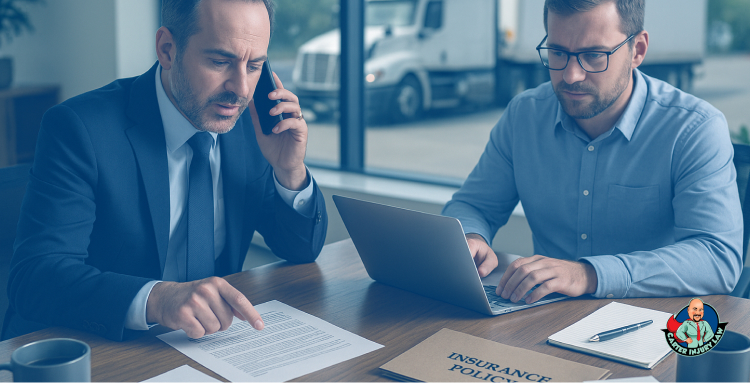
After an accident, insurance companies must be informed without delay. A timely and accurate report to your insurance provider is equally important as a call to law enforcement. Too many firms stumble here, either by waiting too long or by saying too much.
In my practice at Carter Injury Law, I've seen cases where a single careless statement to an adjuster derailed months of preparation. Drivers, often under stress, may speak with candor that later works against them. Managers too may be tempted to speculate, offering explanations that are neither certain nor required. The golden rule is simple, provide facts, not theories.
Insurance companies are partners in protection, but they are also businesses with their own interests. Every word spoken must be precise, and every document submitted must be exact. Firms that communicate in haste often find themselves in disputes over coverage, while those that proceed with patience preserve both trust and protection.
Behind the scenes, a company must turn its gaze inward, examining its own records, practices, and people. For while insurance companies weigh liability, an internal investigation reveals truth, and truth is the surest shield in law…
Once insurance companies are notified, the firm’s true responsibility begins, to examine itself with honesty. The records kept within your walls, the training given to your drivers, and the maintenance logs of your fleet all come forward as witnesses in their own right.
I have stood before judges where companies arrived with incomplete inspection logs, only to see their defense falter before a single question could be asked. Courts are not swayed by excuses, they are persuaded by evidence. A missing document can do more damage than a dented fender.
A thorough review must include the driver's hours of service, pre-trip inspections, and compliance with company policies. Maintenance histories must be checked, for a single overdue repair can become the centerpiece of a claim. If cargo was involved, its securing must be examined, as load shifts are among the most common causes of severe accidents.
I often advise firms to engage counsel early in this stage. Certain findings, if handled improperly, may later be exposed in litigation. Protecting sensitive information under attorney-client privilege can make all the difference.
However, even as the investigation unfolds, one must never forget the human side of these events. Drivers and employees are not merely part of the record but also individuals under pressure. And it is here, in supporting them with care and wisdom, that a firm shows its true character…

Accidents leave an imprint on those involved. Drivers and employees may feel shaken, anxious, or uncertain about what comes next. It is the firm’s duty, both moral and legal, to provide support with clarity and compassion.
Throughout my time at Carter Injury Law, I've noticed that companies that prioritize their employees' well-being fare much better in the long run. Medical evaluations, counseling, and reassurance are investments in safety and trust. A driver who feels supported is more likely to cooperate fully with investigations, document events accurately, and return to duty with confidence.
Legal guidance is often required in this stage as well. Drivers should understand their rights, and firms should ensure that support does not inadvertently compromise their position in ongoing claims. Balancing care with caution is an art every trucking company must master.
Yet support alone cannot prevent the next accident. While comfort and counsel help heal, the lessons of one incident must inform the safety of tomorrow.
Accidents are rarely matters of “if,” but always matters of “when.” Preparedness, sincerity, and careful attention to post-accident procedures distinguish firms that recover with dignity from those that stumble under unnecessary burdens.
We guide trucking firms through these complexities, offering not only insight drawn from years of experience but also practical counsel designed to protect lives and livelihoods. We offer our services on a contingency fee basis, allowing businesses to receive expert legal advice without paying upfront expenses.
Ultimately, a firm that acts wisely today safeguards its reputation, strengthens its operations, and honors the trust of its drivers and employees. The question is not merely how to respond after an accident, but how to cultivate a culture of safety, foresight, and resilience that turns each challenge into an opportunity for improvement.
For those ready to fortify their practices and protect what matters most, the path is clear and the time to act is now.

I’ve spent years at Carter Injury Law representing people whose lives were turned upside down after a rideshare accident. These cases aren’t like ordinary fender benders. The moment an Uber or Lyft vehicle is involved, the questions multiply. Was the app on or off? Whose insurance applies? Can the company itself be held responsible, or will the driver be left carrying the weight?
I’ve seen hardworking commercial drivers lose their licenses, families struggle to pay medical bills, and victims wait months for clarity while insurers argue over coverage. The law in Florida is supposed to provide order in these situations, but in reality it often feels like a shifting maze.
And the truth is, the single detail that decides the fate of most of these cases is something few people even think to ask at the crash scene…
The key detail in a rideshare crash is the driver’s app status. Was the app switched off, turned on but waiting for a fare, or was there a passenger already in the back seat? That single fact changes everything, because insurance coverage in Florida rises and falls with the app.
When the app is off, drivers are usually left with only their personal auto policy. Once the app is on, but before a ride is accepted, there’s limited contingent coverage that rarely comes close to covering serious injuries. And when a passenger is in the car, that’s when the rideshare company’s million-dollar policy often kicks in.
I tell my clients this because the insurance policy that applies determines whether victims are fully compensated or left fighting over scraps. It also decides whether a commercial driver with a CDL (Commercial Drivers License Program) ends up with a career-ending problem, which I’ll explain later. And if you’re assuming you can sue the rideshare company directly, be careful. Florida courts have been siding with Uber and Lyft, treating their drivers as independent contractors. That means the company’s shield is strong but not impenetrable.
And then there’s the darker side of these cases, the staged crashes and fraud rings that make insurers even more aggressive. If you don’t protect your evidence, you risk being caught in a fight you never asked for.
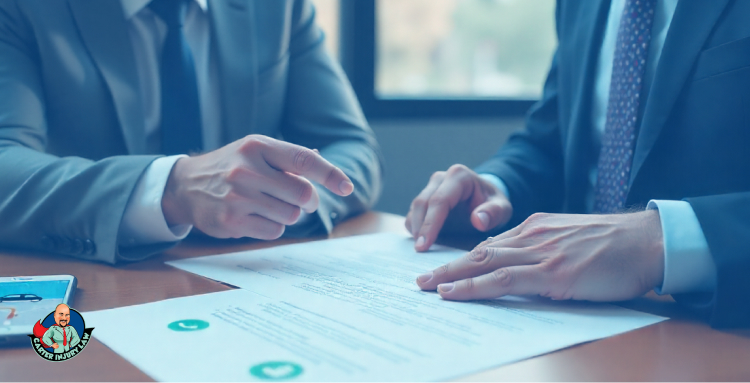
Most people assume they can hold Uber or Lyft directly accountable after a crash. It feels natural, right? The driver was working for the company, so the company should pay. However, Florida law doesn’t always work that way.
Courts here have leaned toward protecting rideshare giants. Judges often rule that drivers are independent contractors, not employees, which means the companies avoid automatic responsibility for their drivers’ mistakes. That doesn’t mean the companies are untouchable, but it does mean you need a strategy.
In my practice, I’ve seen victims frustrated when they realize they can’t simply go after the deep pockets. Instead, we dig into the facts, the app records, and the insurance triggers to build a case. The driver, the insurance company, and the available coverage often become the real battlefield.
And here’s where things get more complicated. If that driver happens to be a CDL holder, the fallout isn’t just about paying claims. A single violation can threaten their license and their livelihood. I’ll explain how federal and state rules collide with rideshare accidents, and why commercial drivers often have far more at stake than they realize.
Then there’s another twist, one that catches people off guard, the rise of staged crashes and fraud schemes targeting rideshares, which make insurance companies even more aggressive in their defenses. That’s where preserving evidence becomes significant.
If you hold a commercial driver’s license, a rideshare accident can do more than cost you money; it can cost you your career.
Here’s why. Commercial drivers operate under federal rules set by the FMCSA (Federal Motor Carrier Safety Administration) as well as Florida’s own CDL laws. These rules create a separate track of consequences, ones that kick in even if your insurance claim is still pending or your civil case hasn’t been decided.
Take this example. A rideshare driver with a CDL gets into a crash. If the police report shows a major violation, like DUI, leaving the scene, or reckless driving, the FMCSA rules require automatic disqualification of that license. The first offense can sideline a driver for a year or more. A second can mean losing the license permanently. And here’s the tricky part, those rules apply even if the violation happens while driving a personal car, not just a semi-truck.
Even so-called “serious violations,” like excessive speeding or following too closely, stack up fast. Too many in a short window and the CDL is suspended. That means a driver could technically win their civil case but still lose the ability to drive commercially.
I’ve counseled drivers who were blindsided by this, because they thought the insurance payout was the whole battle. In truth, the CDL consequences often matter more than the lawsuit, because no license means no livelihood.
And this ties directly back to the earlier sections. If the rideshare company avoids liability, and the insurance company points to gaps in coverage, the driver may be left carrying not just the financial fallout, but also the career-ending penalties. And remember, fraud and staged crash investigations can trigger criminal charges too, which take the risks to an entirely different level.
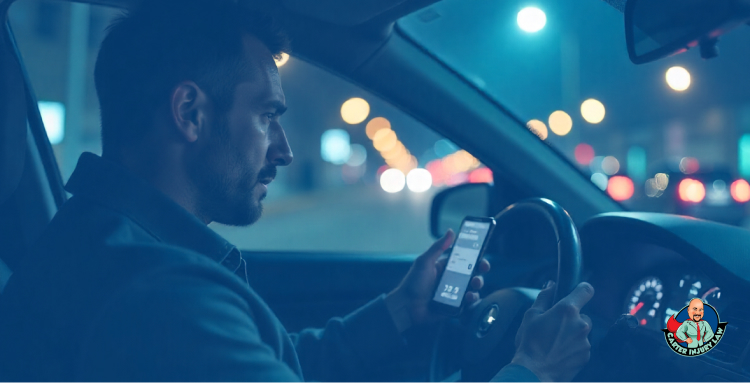
There’s another layer to rideshare accidents that most people don’t see coming, staged crashes.
Florida has become a hotspot for these schemes. Here’s how they work, groups of bad actors intentionally cause or fake accidents involving rideshare vehicles. They then use shady clinics and sometimes even lawyers to inflate medical bills and file lawsuits. On paper, it looks like a legitimate claim. In reality, it’s organized fraud.
Why does this matter if you’re the innocent driver or passenger caught in the middle? Because insurance companies treat every rideshare crash with suspicion, even the genuine ones. I’ve represented clients who were telling the truth but still faced delays, denials, and aggressive defense tactics because insurance companies thought the crash might be part of a scam.
The really dangerous part for drivers, especially CDL holders, is that if your name shows up in one of these investigations, you could be dragged into civil suits or even criminal inquiries. Even if you had nothing to do with the fraud, the cloud of suspicion can damage your case and your career.
That’s why I tell every client the same thing, document everything. Save your app status, screenshot your ride history, get the names of passengers and witnesses, and take photos of the scene. Fraud rings thrive in the absence of proof. Solid evidence is your best protection.
And this circles back to the bigger picture, insurance companies fighting to avoid payouts, rideshare corporations shielding themselves behind contractor rules, and commercial drivers staring down career-ending penalties. Which is why the closing message is simple, you can’t afford to go through this alone.

When I look back at the cases I’ve handled, the common thread is this, rideshare accidents touch on shifting insurance rules, company liability defenses, federal CDL regulations, and even the risk of staged crash fraud. Every detail matters, and missing one can cost victims fair compensation or cost drivers their livelihood.
That’s why at Carter Injury Law, we fight to level the playing field. I know what the rideshare companies will argue, I know how insurance companies stall, and I know the traps that commercial drivers face when their CDL is on the line. My role is to cut through the noise, protect your evidence, and give you the best chance at a fair outcome.
And here’s something else I want you to know, we work on a contingency fee basis. That means you pay nothing up front. We don’t get paid unless we win for you. This structure lets you focus on recovery, not on how you’ll afford legal help.
So if you’ve been hurt in a rideshare crash, or if you’re a commercial driver worried about what a single accident could mean for your career, don’t try to go at it alone. Call me at Carter Injury Law. Your rights, your license, and your future are too important to leave to chance.
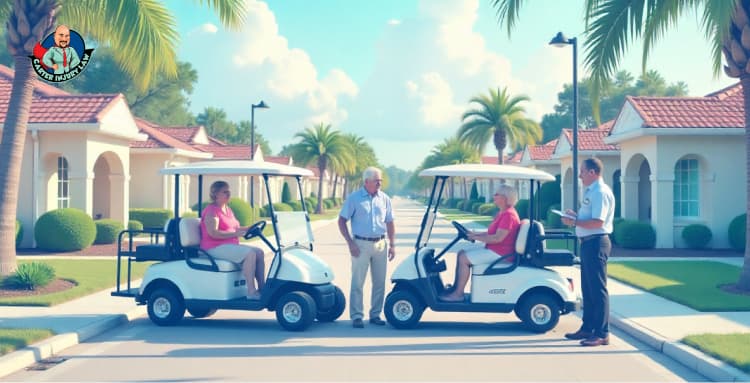
I have lived and worked in Florida long enough to know that golf carts are more than a way to get around the greens. In retirement communities, they are part of daily life, as common as front porch chatter and morning walks. I see them lined up outside grocery stores, moving along quiet roads, sometimes even carrying more grandchildren than groceries. They make life easier, and for many, they make life possible.
However, in my office at Carter Injury Law, I hear the other side of that story. The calls come from families blindsided by a crash that never should have happened. A neighbor’s cart tipping on a curve. A driver who did not notice the stop sign. A path so poorly lit it might as well have been invisible. These aren’t harmless mishaps. Broken bones, head injuries, and lifelong medical bills often follow.
The hardest part for most people is not only the injury however, the confusion that comes after. Who is responsible? The driver? The retirement community? The manufacturer of the cart itself? The law has answers, however, they are rarely simple. And if you are living in one of Florida’s retirement communities, you might be surprised at just how much turns on a single detail…
When I sit down with clients after a golf cart accident, I always start by asking about the moment before it happened. More often than not, the story begins with something that looks ordinary. A cart turning a little too fast. A driver chatting with a passenger instead of keeping eyes on the road. A path that had been patched so many times it felt like a trap waiting for wheels.
Speed is a common thread. Golf carts were never built to handle sharp turns at higher speeds, yet I have seen too many cases where a few extra miles per hour led to a rollover and someone thrown from their seat. The carts themselves don’t offer much protection. No airbags, thin frames, open sides. When they tip, the body takes the full force.
Then there’s the problem of sharing the road. In many Florida communities, golf carts and cars weave around each other on the same stretches of asphalt. One distracted driver in a sedan can change a quiet afternoon into a disaster. I have handled cases where a cart had the right of way, however, the car driver never saw it coming until it was too late.
Infrastructure is another culprit. Poor lighting, missing stop signs, uneven pavement. Retirement communities promise safety and ease, however, when corners are cut in maintenance, residents end up paying the price with their health.
Each cause seems simple when you pull it apart, however, in the aftermath of an accident, the question is never just what happened. It is who allowed it to happen, and that is where liability takes center stage.

When clients come to me after a golf cart accident, their first question is almost always the same: Who is responsible for this? The answer depends on the details, however, Florida law has some clear lines that I’ve seen play out again and again.
The driver is often the starting point. If someone was careless, driving too fast, or ignoring the rules, their negligence can put them on the hook. however, it doesn’t stop there. Florida treats golf carts as what the law calls “dangerous instrumentalities.” That means the owner of the cart can be held liable even if they weren’t the one behind the wheel. I’ve handled cases where a cart was loaned to a friend or family member, and the owner still carried legal responsibility for the damage that followed.
Retirement communities and homeowners’ associations are not exempt either. If a crash happens because the paths were poorly maintained, lighting was missing, or signage was confusing, the community itself may share liability. They owe a duty to keep residents safe, and when they fail, people get hurt.
Sometimes it isn’t the driver or the community. I have seen cases where a defect in the golf cart, like a brake failure or a steering problem, made the accident inevitable. In those situations, the manufacturer or repair shop might be the party we hold accountable.
Liability is rarely clean-cut, and often, more than one party shares the blame. Florida’s system allows fault to be divided, and that’s where things become complicated. Add in questions of insurance coverage, and the simple idea of responsibility quickly turns into a maze.
And that’s the point where most people realize the real challenge is not just proving fault however, understanding how Florida law and insurance rules decide what happens next.
I wish I could tell clients that golf cart accidents follow the same rules as car accidents, however, that isn’t true. Florida law carves out special lanes for golf carts, and understanding those rules can change the entire outcome of a case.
For example, under Florida Statute 316.212, golf carts are only allowed on certain roads and under certain conditions. If a driver takes a cart somewhere it shouldn’t be, like a busy public street not designated for carts, that detail can shift how liability is assigned. It can even affect whether insurance coverage applies at all.
And insurance is where most people get caught off guard. Many assume their homeowner’s or auto insurance will automatically cover golf cart accidents. In reality, those policies often exclude carts unless you’ve purchased specific coverage. I’ve had clients facing hospital bills and rehabilitation costs only to find out the policy they trusted didn’t extend to the vehicle they used every day.
Florida also follows comparative negligence, which means more than one party can share the blame. If you were driving a cart slightly over the speed limit however, the other driver failed to yield, both of you may be assigned percentages of fault. Compensation is then reduced according to that split. It’s a fair system in theory, however, in practice, it can feel punishing for someone already injured.
The mix of law and insurance creates a puzzle that most people don’t have the energy to solve after an accident. That’s why I step in to gather the facts, apply the statutes, and push back when insurers try to deny coverage.
however, knowing the law is only half the battle. What matters most in the hours and days after a crash are the choices you make, and that’s why I always tell my clients to follow a few critical steps right.

When someone calls me in the hours after a crash, they’re often overwhelmed and unsure where to start. The steps you take right after an accident can make or break your case. Over the years, I’ve narrowed it down to the essentials.
First, get medical attention immediately. Even if you feel fine, golf cart accidents often cause injuries that don’t show up right away. I’ve seen clients ignore dizziness or soreness only to discover a concussion or fracture days later.
Second, document everything. If you can, take photos of the scene, the cart, the road conditions, and any visible injuries. Ask for witness names and contact information. Keep any maintenance records if the cart was yours. These small details often decide liability when the story is disputed later.
Third, report the accident. Notify community security, management, or law enforcement. An official report adds weight to your case and prevents the other party from rewriting the story.
Fourth, contact a lawyer early. Evidence fades fast, paths get repaired, witnesses move, and carts get fixed or scrapped. I step in to preserve those details before they disappear, and I know what to look for that most people miss.
In those first days, it’s easy to feel powerless; however, the truth is you have more control than you think. Your actions can protect your health, your finances, and your right to hold the responsible party accountable.

After handling so many of these cases, I’ve come to believe that golf carts represent both freedom and risk in Florida’s retirement communities. They let people stay mobile, social, and independent; however, one accident can turn that freedom into months of pain and financial strain.
My team and I work with clients across Florida who are facing these very situations. We handle golf cart accident cases on a contingency fee basis, which means you don’t pay us unless we win for you. That way, you can focus on healing while we focus on the fight.
I’ve seen too many people assume they have no recourse or wait too long to explore their options. The sooner you act, the stronger your case becomes. If you or someone you love has been injured in a golf cart accident, reach out. Let’s talk through what happened, uncover who is truly liable, and take the next steps together.
Because in the end, these communities were built to give you peace, not chaos. My job is to help you get that peace back.